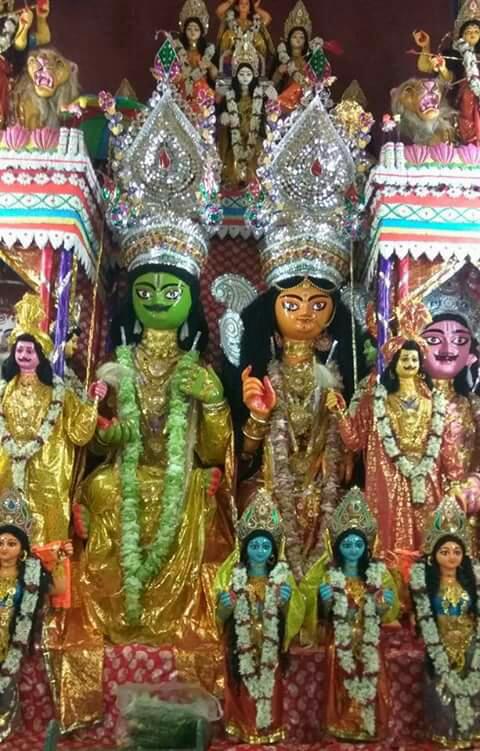
The great war of the Mahabharata was continued for 18 days. Did you know how long the war between Rama and Ravana continued? If you calculate the dates of Ramayana, do you know that happened on 6 December?
Many a people, who walked with arms in the holy day of Ramanavami hardly know the answer, although they know the significance of 6 December. Every Indian knows that the controversial construction of Ayodhya was vandalized on 6 December 1992.
After landslide victory of BJP led NDA (312 seats out of 403) in Uttar Pradesh, the biggest state in India in terms of area, population and legislative assembly seats (as well as Parliamentary constituencies) BJP, the party which is in the power in the centre, is fully charged and eyeing for West Bengal state assembly. The people of Bengal witnessed huge rally with arms in the day of Ramnavami. A group arose question that is it the culture of Bengal? The meaning of it is not clear whether it is Ramnavami or rally with the arms! A group of intellectuals say that Ramnavami is the culture of UP and some others say that the rally with the arms or showing arms is not culture of the Bengalis.
In 2006, in the eve of Nandigram incidents in the state of West Bengal, it was discussed that Bharata, the younger brother of mythological king Rama of Ayodhya, visited some Nadigram and probably it was the place where the clash for land occurred. So, there is a link in between Bengal and Rama. The question is, is Ramnavami a Bengali culture?
Krittwibas Ojha wrote Srirama Panchali (popularly known as Krittwibasi Ramayana) in the 15th century AD and Ramacharitmanas by Tulsidas was written in the next century. So Bengali Rama is older than Hindi Rama! I’m not sure when performing Ramanavami was started in Bengal. In the district of Howrah in West Bengal, puja of Rama has been performing for at least 250 years. The procession of Ramavisarjana is one of the most crowded procession in the state of West Bengal. The Ramnavami vrata is popular among the married ladies in the surrounding districts.
Procession with arms is nothing new in this state. In adivasi (tribal) areas in the state, procession with the arms is common phenomenon. In charhak, the last day of Bengali calendar, playing with arms and performing with the sharp arms are very common in the state of West Bengal. In Muharram, procession with arms is very common picture. So, only those who do not consider tribes in Bengal and the Muslims in Bengal are Bengali, even the culture of rural Bengal is not part of the Bengali culture, can say that the procession with arms is not a Bengali culture.
The debate is, relations in between Ramnavami and arms. Some people argue that there is no relation in between Rama and arms. They have read the Sriram Panchali and think Rama was middleclass Bengali-like character. They always forget that Rama started fighting against demons from his early age and he broke Haradhanu, the great bow of Lord Shiva. He also fought against the King Ravana. According to Ramayana, He single handedly slayed 14000 demons in an hour! He also killed Maricha, Subahu and the chief commander of Ravana, Prahasta. The war between Rama and Ravana was started when the negotiation of Angada was failed and he returned from the court of king Ravana. The war continued for thirteen days. According to Astronomical Dating of the Ramayan by Dr PV Vartak, the war began in 3 November and ended in 15 November 7292 BC. Rama returned to Ayodhya on 6 December, same year.
Finally, In iconographic study, the seventh avatar of Vishnu i.e., Rama holds dhanus (bow) in his left hand and bans (arrow) in his right. So there is no conflict in between Rama and arms. So, procession with arms in the day of Ramnavami neither against the image of Rama, nor against Bengali culure.


